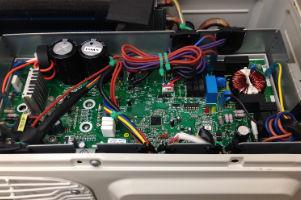 Experts share their appreciations of a technology that offers benefits in performance and comfort and contributes to energy savings.
Experts share their appreciations of a technology that offers benefits in performance and comfort and contributes to energy savings.
by Duván Chaverra Agudelo
The large manufacturers of air conditioning equipment have always worked in their research for the search for systems that have two main characteristics: innovation and performance. Therefore, year after year, the members of the industry witness the different product launches.
One of those innovations that have defined a before and after in the development of air conditioning systems is the Inverter technology, of which we will deepen with the participation of three experts in the field: Reynaldo Bartra, representative of Mitsubishi Electric; Rick Garcia of Daikin and Alfredo Diaz of Lennox.
Getting into the matter, it is worth making an introduction about what an Inverter system is and how it works. In this regard, Alfredo Díaz commented the following:
"In the field of air conditioning, an Inverter system refers to the use of a variable speed compressor. Technically it is a motor compressor, where the motor is digitally switching the polarity and therefore changing its rotational speed. The change of speed affects the capacity of the system and therefore you have a system of variable capacity. The Inverter system consists of four parts, a rectifier circuit that converts the supply voltage to direct voltage, a capacitance inductance filter (for power factor correction), the control circuit that makes adjustment decisions based on operation and the Compressor Inverter circuit that transforms direct current into alternating current emulating three phases. Take note that the supply system is single-phase and the compressor as such is three-phase thanks to this technology."
As a complement, Reynaldo Bartra, from Mitsubishi Electric, highlights another important aspect: "Inverter systems are generally split systems, that is, they have an exterior equipment and one or more interior equipment with refrigerant circulating between them. Unlike many conventional air conditioning systems, in which a large number of ducts are used, what is transported in the system is refrigerant and not air. It is easier to transport refrigerant than air; which also reduces operating costs."
Benefits of an Inverter
As for the benefits offered by this kind of technology, Rick Garcia of Daikin listed them as follows:
- Lower energy consumption, minimizing the payback period and reducing CO2 emissions.
- Improvements in yields at partial loads achieving the highest ESEER values on the market.
- Quick reach of comfort conditions.
- Reduction of noise sound levels to partial loads.
- There are no current peaks: Starting current
- Optimal power factor (> 0.95).
- Greater reliability of the compressor thanks to the reduction of stops and starts of the same.
Likewise, the Daikin representative presents a comparison of the operation of an Inverter equipment compared to a conventional one, with which he drew the following conclusions:
Efficient use of power
- No Inverter: the compressor turns on and off according to temperature changes in the room. In other words, the temperature always fluctuates.
- With Inverter: the speed of the compressor and, therefore, the output power, adapts to the temperature of the room. This efficient and linear temperature regulation maintains a pleasant room at all times.
More efficient use of electricity consumption
- No Inverter: An air conditioner without Inverter function consumes approximately twice as much electricity.
With Inverter: An Inverter air conditioner consumes half the electricity of a model without this function, which results in greater well-being for less money.
For his part, the representative of Lennox, adds about the benefits of this technology that "an Inverter system is able to maintain better temperature control compared to a conventional system. The air conditioning system adjusts its capacity as the thermal load varies. That leads us to a better use of power consumption, thus using only the required energy and saving compared to a conventional system. Let us remember in addition that the transfer surface remains constant. Therefore, by having the coil oversized when the load is lower, the efficiency of the system is higher."
Meanwhile, the Mitsubishi representative also pointed out other benefits of this technology: "Greater comfort than any other type of air conditioning system can offer, since there are no areas too cold or too hot. Ecological operation thanks to the use of a refrigerant that does not harm the environment, and because they use washable and non-disposable filters. Better quality of indoor environment by using a minimum or no amount of ducts, which is where moisture and contaminants harmful to health tend to accumulate. And an easy and fast installation, because they are small equipment and not many resources are required in their installation. Having an interior equipment per zone also allows to install each one without interrupting the operation of the others".
Installation
This aspect has two important steps that must be kept in mind: the first of them is the previous analysis of the space that is going to be air-conditioned with all the variables that may arise. The second is the correct installation of the physical drives. For the first of the cases, Alfredo Díaz considers that the following steps should be followed:
- Evaluate if the space to be conditioned has a variable thermal load and if the outside temperature has significant fluctuations. A conventional system can give better results if there is constant demand and the outside temperature remains high. An Inverter is ideal for environments with variable load and outside temperature.
- Consider that there are no electromagnetic emissions in the vicinity (communication towers, medical equipment, etc.) since they can interfere.
- Consider having a voltage protector at the input of the equipment supply.
- Make sure the system is properly landed (that there is physical ground).
- Use the system of the appropriate capacity to the thermal demand. Check usage and hours of operation.
- See that the condensate drain is suitable. Consider isolation if the drain is exposed in critical areas.
On the second step related to the installation of equipment, Reynaldo Bartra listed several steps:
- Select the exact location of the indoor unit(s), remote control and outdoor unit.
- To install the indoor unit, you must provide means of fixation, either mounted on the wall or suspended from the ceiling. Drill a 3-inch hole (for power, control, and coolant lines).
- Install the outdoor unit, after leveling the selected area for assembly.
- Interconnect the system. Connect the power and control lines, connect the condensate pump, connect the refrigerant pipes, and insulate the gas and liquid refrigerant pipes separately.
- Perform a leak test and evacuate the system.
- Add coolant (if necessary), check the configuration of dip switches, and test the system.
Easy maintenance
The type of maintenance received by equipment with Inverter technology is not different from the maintenance that is executed to another type of air conditioning system with microelectronics.
Rick Garcia of Daikin describes that you should "simply clean the filter every two weeks, this is recommended for low-power residential systems. For larger systems, it is advisable to clean/change the filters at least monthly and have the system inspected annually by a qualified technician."
Also, it is necessary to clean the serbes, once or twice a year, depending on the conditions in which the equipment is used, according to Reynaldo Bartra.
Obstacles to overcome
With a team of this kind, everything seems to indicate, as Frank García mentions, that there is no technical or technological reason why Inverter technology will not continue to gain acceptance in the market.
However, there are factors such as the lack of information and the limited preparation of some technicians that can slow down the expansion of this technology throughout the territories.
"Training doesn't reach all technicians. The manufacturer's support in the availability of spare parts is important, but even more important is the certification of the technician in this type of technology and the support in the field during the first installations, "said Alfredo Díaz, of Lennox.
Meanwhile, the representative of Mitsubishi commented on the matter that "the biggest obstacle is the lack of information from users. People themselves are not very willing to try a new technology, especially if they already have time in the market, as is the case of engineers who have been designing convectional air conditioning systems for years. That is why it is very important to educate users and professionals in the industry about the benefits of this new technology, and for this the media can do important work."
In conclusion, we are facing a technology whose goal is to continue gaining land, and that has advantages for a design that makes it efficient and that incidentally contributes to the environment, reducing the carbon footprint, using alternative refrigerants and improving energy consumption.






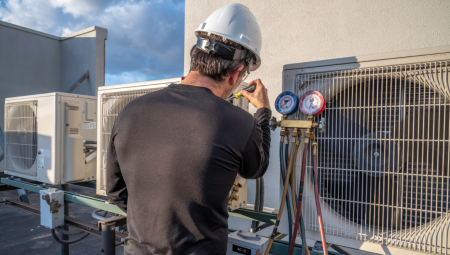

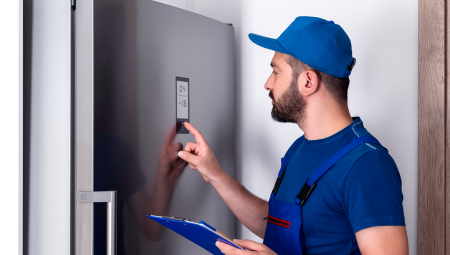
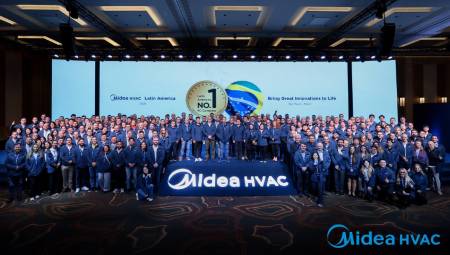

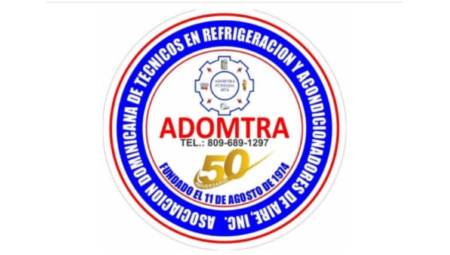
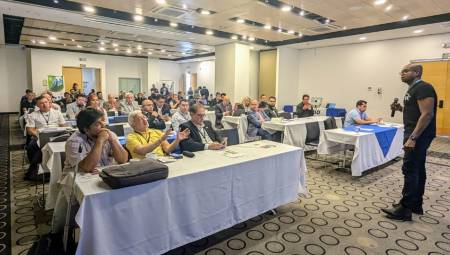


Soy tecnico y la realidad es que en centro america es muy complicado conseguir informacion ya que los distribuidores no publican ni fugan informacion y el mercado se reduce a un puñado de tecnicos certificados y los demas vamos aprendiendo sobre la marcha y desde esa perspectiva se va dando mala fama a los equipos y todo por malas practicas y falta de informacion deberian dar una plataforma para que el tecnico comun realice consultas y evitar tanta falta de buenas practicas y daria mas relevancia a las marcas que estan innovando.
Hola Joel,
Para eso estamos. Si tiene alguna duda en particular, favor dejarnoslo saber.
Saludos!